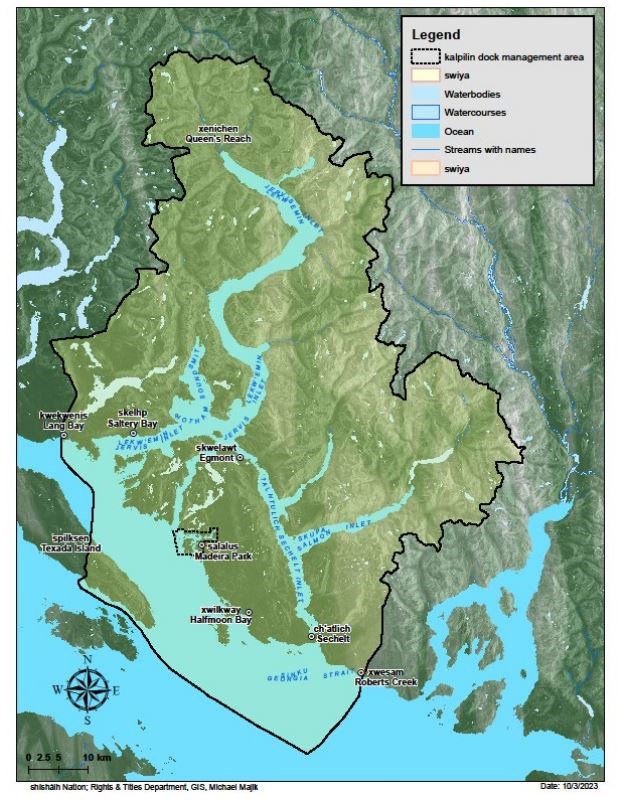Revisions to the proposed shíshálh swiya Dock Management Plan will be coming forward, according to a joint statement from the province and shíshálh Nation.
In a March 8 joint statement Nathan Cullen, Minister of Water, Land and Resource Stewardship, and shíshálh Nation lhe hiwus (Chief) Lenora Joe, thanked all who "took the time to contribute thoughtful, respectful and meaningful comments on the proposed changes to the shíshálh swiya Dock Management Plan (DMP)," and released a "what we heard" report.
In making the joint announcement, Cullen and Joe stated, "The shíshálh swiya Dock Management Plan is an important tool to provide management guidance, and we heard you that it needs to be revised to better balance other values and interests while maintaining environmental preservation. We will be proposing further amendments to the shíshálh swiya Dock Management Plan in response to the feedback we have received.
"We want to get this right. We will share further information on proposed changes to the Dock Management Plan in the days ahead. Together we want to implement good dock standards for a long, sustainable and enjoyable future on the Sunshine Coast."
What's in the report?
Along with a summary of specific comments related to the DMP, that document identifies "other overarching themes have been identified throughout the public engagement."
Included was an acknowledgement of "requests for increasing opportunities for public involvement in dock management and environmental restoration on the Sunshine Coast."
Other themes cited were support for "strong, respectful and considerate relationships as we move forward in our reconciliation journey in British Columbia" as well as for "additional forms of protection and restoration of environmental resources," and "importance and value of scientific studies, monitoring, information gathering and data sharing to inform dock management." An interest "to understand more about of impacts of existing moorage structures on the environment and cultural resources" was also listed in the category.
DMP input detailed
The document details a list of concerns identified during a public comment period on an application to amend the plan governing salt and fresh water private moorages in the shíshálh Nation's territory that was launched Nov. 23 and closed Feb. 16.
Items listed include the need for flexibility in dock design at different locations, an interest in “grandfathering” (providing an exemption from new requirements and/or best management practices) for existing moorage structures, and ensuring access to private property from the water. Also listed as "heard" were concerns about the plan not being supportive of existing private boathouses, the importance of robust, healthy marine and freshwater ecosystems and questions about dock impacts in freshwater environments given the importance of endangered species. In addition, "the potential economic impacts: to private property and business value, to regional economy from a possible reduction in moorage opportunities, and costs from disposal of existing structural materials" was listed as a concern that was raised in the public review process. Tables listing more detailed input received in each of the concern areas are also part of the summary document.
The executive summary of the nine-page "what we heard" document, begins with a statement that the two parties are "working together in true and lasting reconciliation that respects the exercise of Indigenous title and rights and ensures that lands and resources are managed in ways that respect of the values of shíshálh people as well as the values shared by all residents in the shíshálh swiya."
The document also provides a summary review of waterfront usage in the swiya from time immemorial to the present day.



